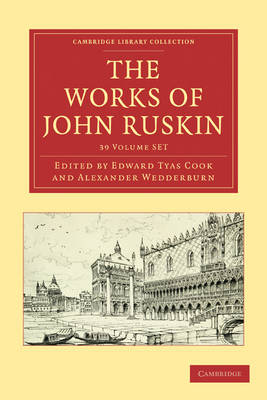Cambridge Library Collection - Works of John Ruskin
34 primary works • 44 total works
Volume 22
The Works of John Ruskin: Volume 22, Lectures on Landscape; Michaelangelo; Tintoret
by John Ruskin
Volume 23
The Works of John Ruskin: Volume 23, Val d'Arno; The Schools of Florence
by John Ruskin
Volume 24
Volume 25
The Works of John Ruskin: Volume 25, Love's Meinie and Proserpina
by John Ruskin
Volume 26
Volume 29
The Works of John Ruskin: Volume 29, Fors Clavigera VII-VIII
by John Ruskin
Volume 30
The Works of John Ruskin: Volume 30, The Guild and Museum of St George
by John Ruskin
Volume 31
Volume 32
The Works of John Ruskin: Volume 32, Studies of Peasant Life
by John Ruskin
Volume 33
The Works of John Ruskin: Volume 33, The Bible of Amiens; Valle Crucis; The Art of England
by John Ruskin
Volume 36
Volume 37
Volume 38
Volume 39
The Works of John Ruskin: Volume 35, Praeterita and Dilecta
by John Ruskin
The Works of John Ruskin: Volume 35, Part 2, Volumes II and III, Dilecta and Appendix
by John Ruskin
The Works of John Ruskin: Volume 27, Fors Clavigera II-III, Part 2
by John Ruskin
The Works of John Ruskin: Volume 28, Fors Clavigera VI, Part 2
by John Ruskin


